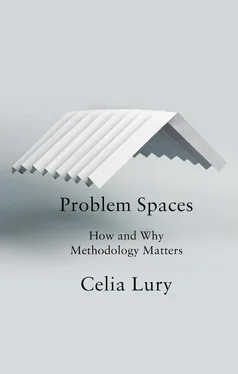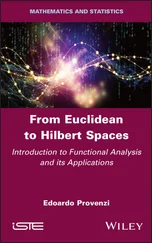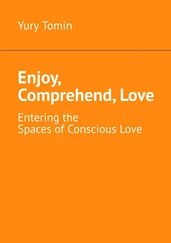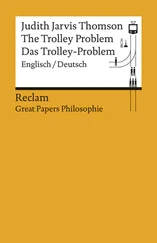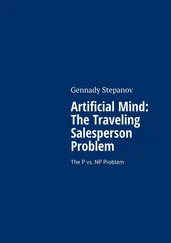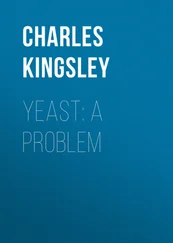Writing after the rise of the computer, it seems obvious to Simon that cognition is not merely a solely human means of problem-solving, but is also a possible characteristic of the non-human. The limits of what he calls bounded rationality are not understood in terms of human cognition alone, but are the properties of a problem in changing and two-way (but not necessarily symmetrical) relations in complex cognitive environments. 6And such environments are not inert, or unchanging; indeed, they may be characterized by different kinds of distributed cognition.
For both Dewey and Simon, then, the relation of a problem to a context or environment not only changes in time but is cognitively distributed; for both, a notion of problematization that insists upon a stable, once-and-for-all distinction between a problem and a single environment is inadequate. This insight is acknowledged in Dewey’s use of the concept ‘pattern of inquiry’, since patterning typically involves a parallax effect of figure-ground, allowing the two-way relation between figure and ground, an object (or problem) and its environment(s), to be surfaced as part of an inquiry. Relatedly, the emphasis on the iterative relation between representation and intervention that follows from Simon’s use of the term of design leads him to emphasize the importance of the interactivity of interfaces to the artificial sciences. Indeed, for Simon, the interface is the primary epistemic tool of the artificial sciences:
An artifact can be thought of as a meeting point – an “interface” in today’s terms – between an “inner” environment, the substance and organization of the artifact itself, and an “outer” environment, the surroundings in which it operates. If the inner environment is appropriate to the outer environment, or vice versa, the artifact will serve its intended purpose. (1996: 6)
The value of the concept of interface for understanding the relation between science and society is the focus of discussion in Chapter 6.
The third approach presented here is that of feminist writer Donna Haraway who offers a nuanced account of the concept of situatedness (1991). Contributing to and building on feminist debates on epistemology, Haraway argues for an understanding of objectivity – a value she wants to retain as an ideal – as constituted in situated knowledges. 7
Responding to feminist debate, in which it is argued that knowledge always emerges from a standpoint, Haraway writes of the impossibility of innocent ‘identity’ politics and epistemologies. In place of emphasizing the identity of the researcher in her understanding of situated-ness she proposes that, ‘Splitting, not being, is the privileged image for feminist epistemologies of scientific knowledge’:
‘Splitting’ in this context should be about heterogeneous multiplicities that are simultaneously necessary and incapable of being squashed into isomorphic slots or cumulative lists. This geometry pertains within and among subjects … Here is the promise of objectivity: a scientific knower seeks the subject position not of identity, but of objectivity; that is, partial connection. (1997: 193)
But Haraway’s approach is also not to be confused with ‘the death of the subject, that single ordering point of will and consciousness’, but rather is a process of ‘generative doubt’ that follows ‘the opening of non-isomorphic subjects, agents, and territories of stories unimaginable from the vantage point of the cyclopean, self-satiated eye of the master subject’ (1991: 192).
Haraway’s resistance to, or at least complication of, standpoint is not a proposal for a view from nowhere or ‘above’. The only way to find a larger vision, she says, ‘is to be somewhere in particular’:
The science question in feminism is about objectivity as positioned rationality. Its images are not the products of escape and transcendence of limits, i.e. the view from above, but the joining of partial views and halting voices into a collective subject position that promises a vision of the means of ongoing finite embodiment, of living within limits and contradictions, i.e. of views from somewhere. (1991: 196)
For Haraway, ‘feminist embodiment resists fixation and is insatiably curious about the webs of differential positioning’ (1991: 196). Significantly, she argues that it is not only humans that know, and describes the importance of acquiring ‘the ability partially to translate knowledges among very different, and power-differentiated communities’ in an earth-wide network of connections that includes the objects of knowledge as ‘knowers’ themselves. Perhaps most well-known is her concern with knowing with animals, most notably with companion species such as dogs (Haraway 2003; see also Motamedi-Fraser 2019).
Haraway’s knowledge is not only situated however: it is also post-plural, a term also associated with another feminist writer, the anthropologist Marilyn Strathern (1991). Haraway cautions against the ‘easy relativisms and holisms built out of summing and subsuming parts’. She refuses ‘to resolve the ambiguities built into referring to science without differentiating its extraordinary range of contexts’ (1991: 197) while Strathern says of her own practice:
[The book] Partial Connections was an attempt to act out, or deliberately fabricate, a non-linear progression of argumentative points as the basis for description … Rather than inadvertent or unforeseen – and thus tragic or pitiable – partitionings that conjured loss of a whole, I wanted to experiment with the ‘apportioning of size’ in a deliberate manner. The strategy was to stop the flow of information or argument, and thus ‘cut’ it. (2004: xxix)
This is a rather different understanding of cutting or partitioning to that outlined by Simon above, in which cutting divides a problem into parts that can be solved independently and then put together again as a whole. For Strathern and Haraway, cutting is (perhaps counter-intuitively) a way to acknowledge patterning as a way to make connection and continuity. What they add is the importance of recognizing that this continuity is only ever partial, and is emergent in the practice of situatedness (of splitting). In consequence, Haraway stresses the importance of seeking ‘perspective from those points of view, which can never be known in advance, which promise something quite extraordinary; that is, knowledge potent for constructing worlds less organized by axes of domination’ (1991: 192). 8
In addition to splitting, Haraway introduces figuration as a method to do this, a practice to put alongside Rockburne’s drawing that draws itself, Dewey’s line of inquiry and Simon’s notion of design. Describing herself as ‘a person cursed and blessed with a sacramental consciousness and the indelible mark of having grown up Irish-Catholic in the United States’, she puts forward an understanding of the figure as an image, a sign that is the thing in itself: in her work the figures of the cyborg, the OncoMouse, or the cat’s cradle are a way of acknowledging an ‘implosion of sign and substance, a literalness of metaphor, the materiality of trope, the tropic quality of materiality’ (Haraway and Goodeve 2000).
For Haraway, ‘Figurations are performative images that can be inhabited. Verbal or visual figurations can be condensed maps of contestable worlds’ (1997: 17). The practice of figuration is to ‘somehow collect up and give back the sense of the possibility of fulfillment, the possibility of damnation, or the possibility of a collective inclusion in figures larger than that to which they explicitly refer’ (Haraway and Goodeve 2000). Methodologically speaking, figuring involves the activation of methodological potential in a process that is neither teleological nor mechanistic, both of which conceive as problemetization as going in one direction only, from givens to goals, but instead is a becoming-with.
Читать дальше
